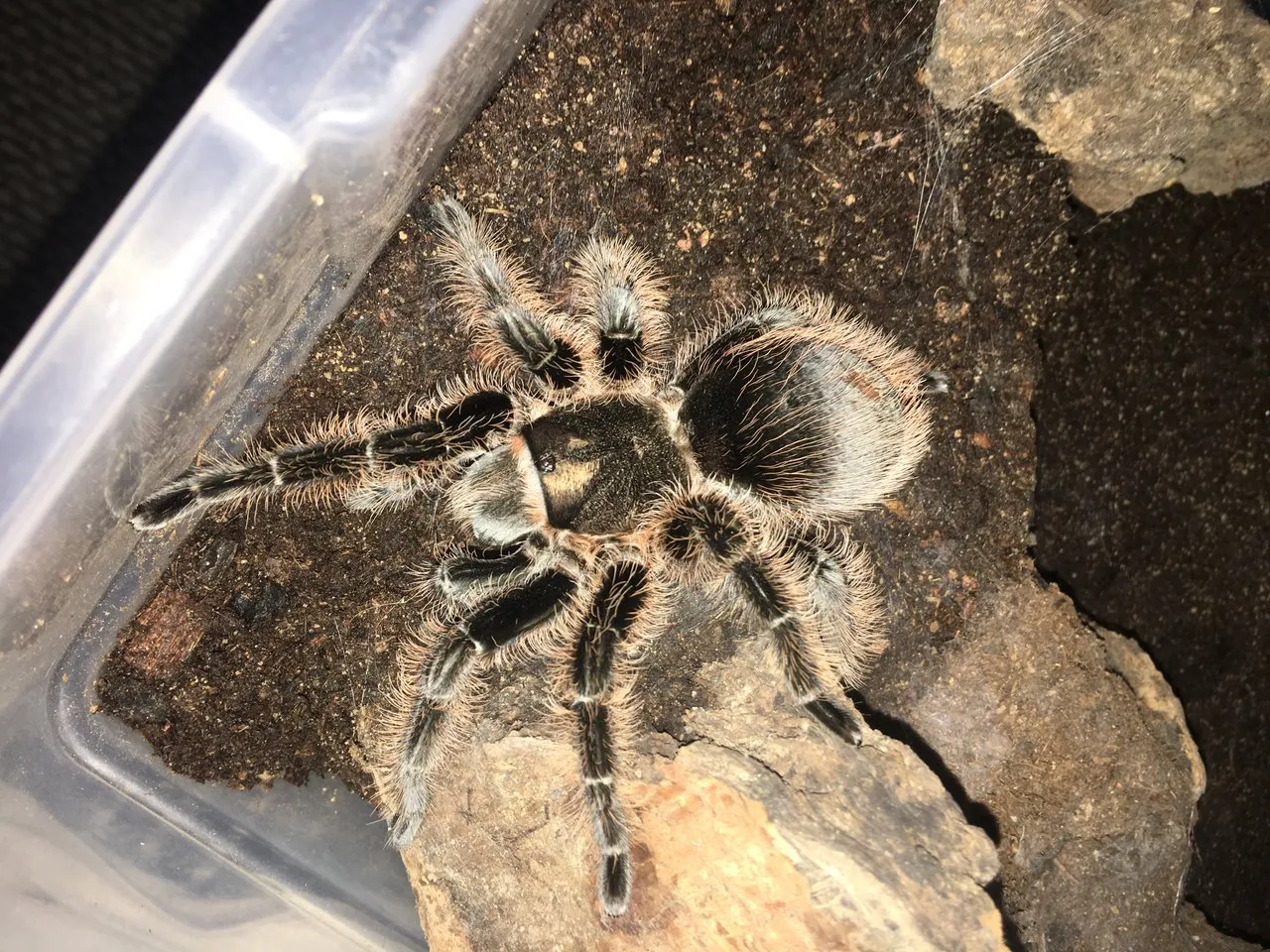Nicaragua Curly Hair Tarantula Care Basics
The Nicaragua Curly Hair Tarantula (Tliltocatl albopilosus) is a popular and relatively easy-to-care-for tarantula species, making it a great choice for both novice and experienced arachnid enthusiasts. Native to Nicaragua and Costa Rica, these terrestrial tarantulas are known for their docile temperament and distinctive appearance, characterized by their brown bodies covered in curly, golden hairs. This guide provides essential care tips to ensure your Nicaragua Curly Hair Tarantula thrives, covering everything from habitat setup and feeding to health considerations and handling. With proper care, these fascinating creatures can live for many years, bringing joy and wonder to their keepers.
Choosing the Right Enclosure
Selecting the appropriate enclosure is the first crucial step in providing a comfortable and safe environment for your Nicaragua Curly Hair Tarantula. The enclosure should be well-ventilated, escape-proof, and provide adequate space for the tarantula to move around, burrow, and exhibit natural behaviors. The size of the enclosure should correspond to the size of the tarantula, with juveniles requiring smaller setups and adults needing more spacious accommodations. This not only ensures the tarantula’s physical well-being but also minimizes stress, contributing to its overall health and longevity.
Enclosure Size and Material
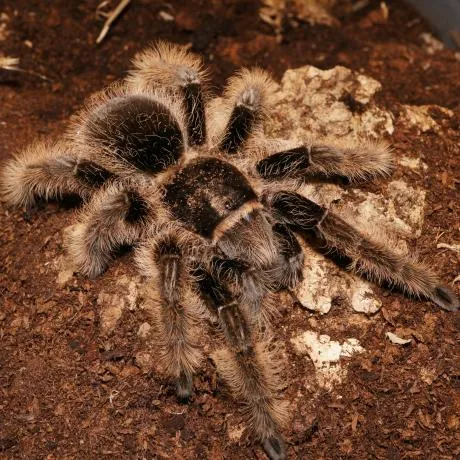
For juvenile Nicaragua Curly Hair Tarantulas, a container approximately 5-10 gallons in size is usually sufficient. As the tarantula grows, you’ll need to upgrade to a larger enclosure. An adult Nicaragua Curly Hair Tarantula will thrive in a 10-20 gallon enclosure. Glass or acrylic enclosures are suitable, but ensure the lid is secure and has adequate ventilation. The enclosure should be at least twice as wide as the tarantula’s leg span and have enough height to accommodate the substrate and any decorations or hides you plan to include. Avoid enclosures with excessive ventilation, as this can lead to drying out the habitat.
Substrate Selection
The substrate forms the base of your tarantula’s habitat and plays a vital role in maintaining humidity, providing a burrowing medium, and mimicking the tarantula’s natural environment. A good substrate should be able to retain moisture without becoming overly wet, preventing mold growth and promoting a healthy environment. A mix of peat moss, coco fiber, and a small amount of vermiculite is an excellent choice. This combination provides excellent moisture retention, burrowing capabilities, and a natural look. Avoid using cedar or pine shavings, as these can be toxic to tarantulas. The substrate should be deep enough for the tarantula to burrow comfortably, usually about 3-5 inches deep for adults.
Creating the Ideal Habitat
Once you’ve chosen the right enclosure and substrate, it’s time to create a habitat that meets your Nicaragua Curly Hair Tarantula’s specific needs. This involves controlling temperature and humidity, providing hiding spots, and incorporating decorations that mimic the tarantula’s natural environment. A well-designed habitat will not only keep your tarantula healthy but will also make it feel secure and content. By carefully replicating their natural habitat, you can create an environment where your tarantula can thrive and exhibit its natural behaviors.
Temperature and Humidity
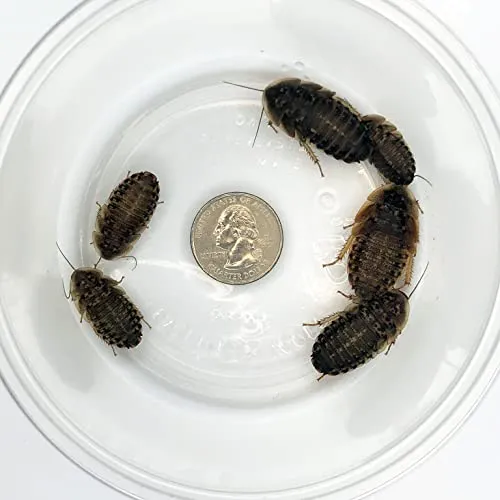
Nicaragua Curly Hair Tarantulas thrive in temperatures between 75-85°F (24-29°C). A heat lamp or a heat mat placed on the side of the enclosure can help maintain the proper temperature, especially in cooler environments. Avoid placing the heat source directly under the enclosure, as this can overheat the substrate. Humidity levels should be maintained between 65-75%. You can monitor humidity with a hygrometer. Misting the enclosure lightly every few days, or when the substrate starts to dry out, is usually sufficient to maintain the desired humidity levels. Proper ventilation is crucial to prevent mold growth, so ensure the enclosure has adequate airflow.
Hiding Spots and Decorations
Nicaragua Curly Hair Tarantulas are naturally reclusive creatures that require hiding spots to feel secure. Provide at least one hide, such as a piece of cork bark, a half log, or a commercially available tarantula hide. The hide should be large enough for the tarantula to comfortably retreat into. Decorations can also enhance the enclosure and provide enrichment. You can add artificial plants, such as silk plants, to provide additional hiding places and a more natural look. Ensure that any decorations are securely placed and free of sharp edges to prevent injury. Always avoid anything that could be toxic or harmful to your tarantula.
Feeding Your Nicaragua Curly Hair Tarantula
Feeding your Nicaragua Curly Hair Tarantula is a straightforward process, but it’s essential to understand their dietary needs and feeding habits to ensure their health and well-being. These tarantulas are opportunistic feeders, meaning they will eat whatever prey is available. However, providing a balanced diet, appropriate feeding frequency, and ensuring access to fresh water are crucial for their overall health. Proper feeding practices contribute significantly to the longevity and vitality of your pet.
Diet and Feeding Frequency
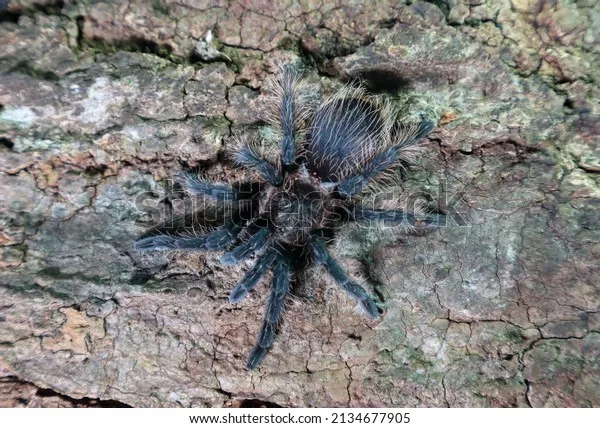
The feeding frequency depends on the tarantula’s age and size. Spiderlings (young tarantulas) should be fed 2-3 times a week, while juveniles can be fed once or twice a week. Adult Nicaragua Curly Hair Tarantulas typically only need to be fed once every 1-2 weeks. It’s important to offer only what the tarantula will eat. Remove any uneaten food within 24 hours to prevent the buildup of mold and bacteria. Monitor your tarantula’s abdomen size; a well-fed tarantula will have a slightly rounded abdomen. If the abdomen appears too large, reduce the feeding frequency.
Suitable Food Items
A varied diet is crucial for maintaining the health of your Nicaragua Curly Hair Tarantula. The primary food source should consist of insects. Crickets, mealworms, dubia roaches, and superworms are all suitable options. Ensure the insects are appropriately sized for your tarantula; prey should be smaller than the tarantula’s body length. Gut-load the insects with nutritious food before feeding them to your tarantula; this enhances the nutritional value of the meal. Avoid feeding wild-caught insects, as they may carry parasites or pesticides. Consider using pre-killed insects if your tarantula is a bit skittish.
Watering and Hydration
Providing access to fresh water is essential for your Nicaragua Curly Hair Tarantula’s hydration. A shallow water dish, such as a bottle cap, should be provided at all times. Ensure the water dish is shallow enough to prevent the tarantula from drowning. Change the water regularly, at least once or twice a week, to keep it clean and prevent bacterial growth. You can also mist the enclosure lightly every few days to maintain humidity and provide additional hydration, but be careful not to oversaturate the substrate.
Handling and Safety
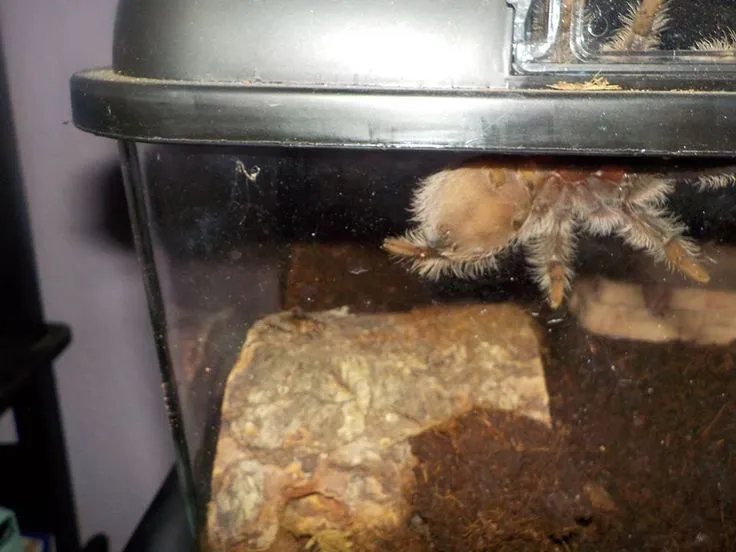
Handling your Nicaragua Curly Hair Tarantula is generally discouraged, especially for beginners. While these tarantulas are known for their docile nature, they can still bite if they feel threatened. Furthermore, a fall from even a short height can be fatal to a tarantula. However, if handling is necessary, it’s important to do so safely and understand the potential risks involved.
Safe Handling Practices
If you choose to handle your Nicaragua Curly Hair Tarantula, do so with extreme caution. Always handle the tarantula close to the ground or a soft surface to minimize the risk of injury if it falls. Gently coax the tarantula onto your hand or a soft brush, never grabbing it. Avoid sudden movements, loud noises, or anything that might startle the tarantula. Wash your hands thoroughly before and after handling your tarantula. Be aware of the tarantula’s defenses, such as flicking urticating hairs from their abdomen, which can cause skin irritation. It’s advisable to wear gloves if you are concerned about these hairs.
Recognizing Stress and Avoiding Bites
Learn to recognize the signs of stress in your tarantula to avoid being bitten. A stressed tarantula may raise its front legs, rear up, or flick its urticating hairs. If your tarantula displays any of these behaviors, it’s best to leave it alone. Avoid handling your tarantula during molting, as they are particularly vulnerable and stressed during this time. Bites from Nicaragua Curly Hair Tarantulas are not considered medically significant, but they can be painful. Always prioritize the tarantula’s well-being and avoid handling it if you are unsure or uncomfortable.
Health and Common Issues
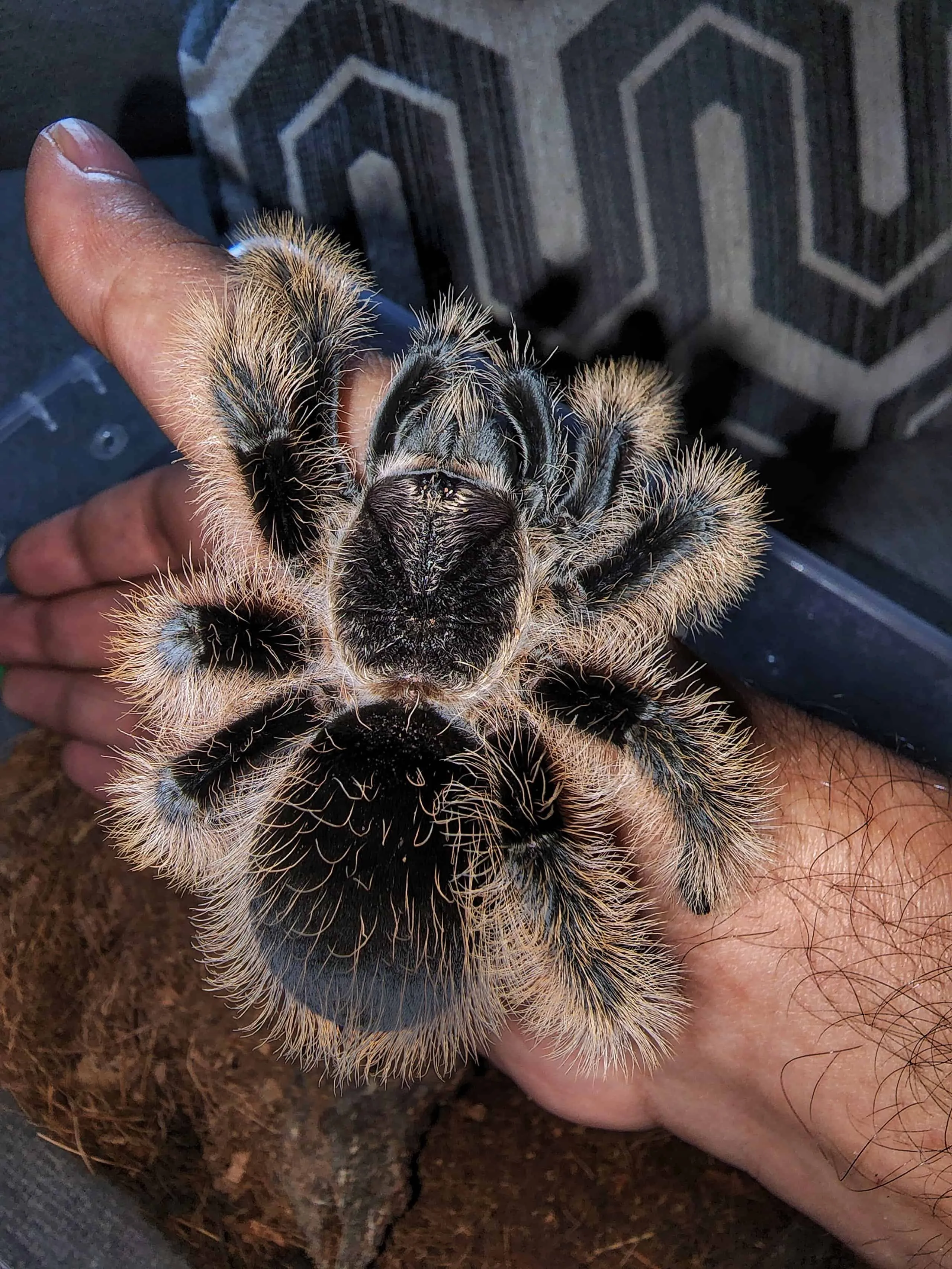
Like any pet, Nicaragua Curly Hair Tarantulas can experience health issues. Recognizing and addressing these issues promptly is crucial for maintaining their health and well-being. Regular observation of your tarantula is important to identify any potential problems early on. By keeping a close eye on your pet, you can catch issues early and provide the necessary care or seek professional veterinary assistance when needed.
Identifying and Treating Illnesses
Common signs of illness in Nicaragua Curly Hair Tarantulas include lethargy, loss of appetite, and changes in behavior. Other signs might include a swollen abdomen, the inability to move, or unusual postures. If you notice any of these symptoms, it’s important to investigate the cause. The most common ailments involve improper humidity or unsanitary living conditions, which can lead to fungal and bacterial infections. In some cases, mites can infest the tarantula, which can be addressed by removing the affected substrate. If the condition persists or worsens, consult an expert or veterinarian experienced in tarantula care.
Molting and What to Expect
Molting is a natural process in which tarantulas shed their exoskeletons to grow. During molting, the tarantula will typically stop eating and may appear sluggish. You may notice a change in the color of the tarantula, and it may also start to spin a mat of silk. The tarantula will usually flip onto its back to molt. Do not disturb the tarantula during this process, as it is vulnerable. After molting, the tarantula’s new exoskeleton will be soft, and it may take a few days for it to harden. Do not feed the tarantula until its fangs have hardened, usually a week after molting. Provide adequate water and maintain proper humidity levels to facilitate the molting process.
Nicaragua Curly Hair Tarantula: Breeding and Reproduction
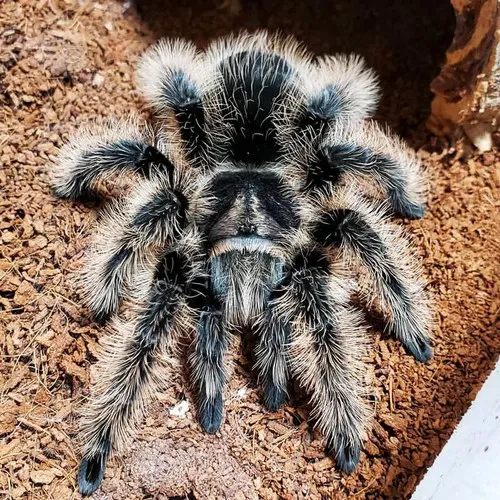
Breeding Nicaragua Curly Hair Tarantulas is a rewarding endeavor for experienced keepers. It involves understanding the mating behavior of the species, providing the right conditions for successful reproduction, and ensuring proper care for the spiderlings. Breeding should only be attempted by those with prior experience and a thorough understanding of tarantula care.
Understanding the Molting Process
The molting process is an essential aspect of the tarantula’s life cycle. Before molting, tarantulas typically stop eating and may exhibit a loss of appetite. They often become less active and may dig a burrow or spin a mat of silk in preparation. The duration of the molting process can vary depending on the tarantula’s age and size, but it usually takes several hours. It’s crucial to avoid disturbing the tarantula during this time, as it’s extremely vulnerable. Provide optimal humidity and temperature conditions to aid the molting process.
Preparing Your Tarantula
Before breeding, it’s crucial to have the appropriate facilities and knowledge. You’ll need to prepare the enclosures, including a separate enclosure for the female to lay her eggs, in which she’ll create an egg sac. The male and female should be of appropriate size and maturity. Carefully observe the female’s behavior to determine her receptiveness to mating. The breeding process requires close monitoring to prevent any issues. Once the female has laid her eggs, she’ll guard the egg sac. Spiderlings will require specialized care, and you’ll need to be ready for this responsibility.
Conclusion and Final Thoughts
Caring for a Nicaragua Curly Hair Tarantula is a rewarding experience. By following the care tips outlined in this guide, you can create a healthy and enriching environment for your tarantula. Remember that proper habitat setup, feeding, and careful observation are crucial to your pet’s well-being. Enjoy the fascinating world of these beautiful creatures! Remember to continually research and learn, because the more you know, the better you can care for your Nicaragua Curly Hair Tarantula. With patience and proper care, you can enjoy the companionship of these amazing animals for years to come.
